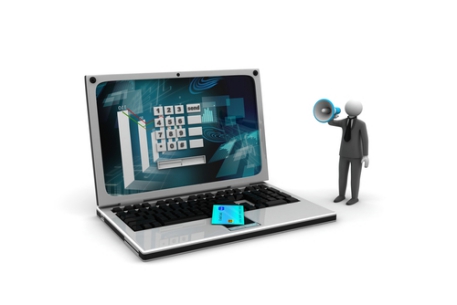
New research about the growth of mobile commerce over the next few years has the web buzzing. But we thought that knowing exactly what retail segments are driving the growth and where the biggest share of spend is and will be over the next several years is what’s really worth knowing. We dug into that and thought we’d share what we found.
It should come as no surprise that U.S. consumers are becoming increasingly tech-savvy, especially when it comes to handheld devices. However, recent research from Forrester shows just how comfortable American shoppers are with the idea of buying items not just online, but from their smartphone or tablet.
According to a Forrester study released earlier this week, m-commerce is expected to nearly double in four years, largely driven by consumers using tablets. Currently, those devices are the more popular shopping tool that consumers use, with $76 billion of transactions occurring on tablets this year, compared to $38 billion on smartphones.
Sucharita Mulpuru was a lead analyst behind the Forrester study, and explained in the report that U.S. consumers quickly incorporating mobile devices into their everyday use is one of the main reasons behind the projected increase in m-commerce. While not all American’s who own a tablet or smartphone are necessarily shopping online with them, Mulpuru said that number will also increase over the next four years.
“In fact, we estimate that only 38 percent of smartphone owners and 31 percent of tablet owners will purchase on those devices in 2014,” she stated in the report. “We expect that figure to grow to 55 percent and 61 percent, respectively, for smartphones and tablets by 2018.”
What are people buying online?
One of the more popular mobile purchases by consumers have to do with travel. According to research from eMarketer, mobile travel sales in the U.S., mobile travel sales – including travel purchases on both tablets and smartphones – totaled $16.36 billion in 2013 and will increase another 59.8 percent this year to reach $26.14 billion.
Additionally, eMarketer estimates that in 2014, US mobile travel sales will account for 18 percent of all digital travel sales. In 2018, that number is predicted to increase to 37 percent.
In 2013, travel bookings purchases made from mobile devices accounted for approximately 12 percent of total digital travel sales, while purchases made from a desktop computer accounted for 88 percent of sales. However, eMarketer predicts that mobile devices will become more popular over the next four years, and that 37 percent of digital travel sales will be made from a mobile device by 2018.
A second study from eMarketer showed that overall retail ecommerce sales are increasing. Total ecommerce sales for 2014 will likely hit $304.1 billion, according to eMarketer, and computers and consumer electronic products will account for $66.4 billion, or 21.8 percent, of total sales this year.
PYMNTS Predictions
If the eMarketer research is any indication, m-commerce in the U.S. will continue to grow, as more shoppers turn to their smartphones or tablets to make purchases. But what exactly is the breakdown between purchases made on mobile devices versus a desktop?
By applying a similar growth projection that was first calculated by eMarketer in their travel study mentioned earlier in this article, PYMNTS analysts determined a likely breakdown of consumers buying items through mobile and desktop options.
According to PYMNTS’ estimations, in 2012, computer and consumer electronics purchases made on mobile devices reached $5.39. In 2014, that category is expected to be $12.62 billion, which is an increase of 134 percent. In comparison, computer and electronic purchases made from a desktop in 2012 reached $43.61 billion, and are predicted to increase to $53.78 billion, or an increase of 23.32 percent.
As these calculations show, the growth of m-commerce does not necessarily equate the immediate elimination of consumers making purchases on a desktop computer. However, the numbers do not lie, and tech-savvy shoppers are enjoying hitting the “purchase” button on their smartphones.